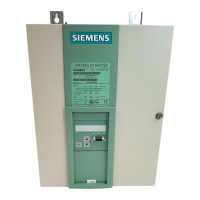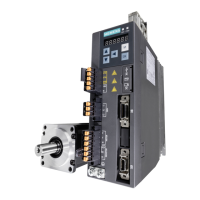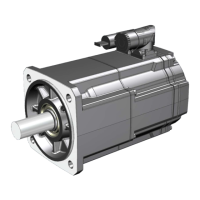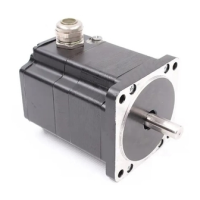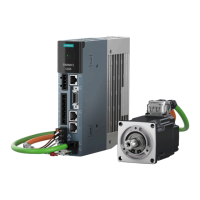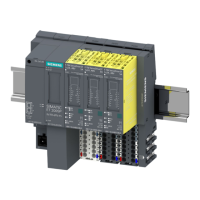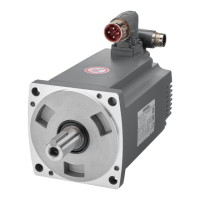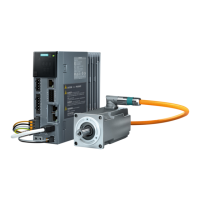02.00 Start-Up
SIEMENS AG 6RX1700-0AD76 7-31
SIMOREG DC Master Operating Instructions
Example of PKW data exchange:
P918 = 1 This setting assigns identifier 300 to the parameter job (request)
U711 = 298 and identifier 301 to the parameter response.
Structure of a telegram for PKW data exchange:
The telegram consists of the following data words:
Identifier
ID
Parameter identifier
PKE
Parameter index
IND
Parameter value 1
PWE1
Parameter value 2
PWE2
ID is the CAN identifier that is defined for the COB in question by parameterization.
PKE contains the request or response ID and the parameter number
Request or response ID Parameter number
PNU
Bit 0 to bit 10 contain the number of the parameter concerned. Bit 12 to bit 15 contain the
request or response ID. The same request or response IDs are used as for PROFIBUS (see
Table in Chapter 7.7.2).
Parameter numbers larger than 999 are recoded for use in the parameter ID because of the
limitation of the bit field. Bit15 is used as the page select bit in the index:
Parameter
range
Number
displayed
Input on the
OP1S
PNU in the
parameter ID
Page select bit
(index bit 15)
Pxxx, rxxx
0 - 999 0 - 999 0
Basic unit
Uxxx, nxxx
2000 - 2999 0 - 999 1
Hxxx, dxxx
1000 - 1999 1000 - 1999 0
Technology
board
Lxxx, cxxx
3000 - 3999 1000 - 1999 1
For that reason, for example, for a request that concerns parameter U280, PNU = 280 must
be entered in the parameter ID and bit15 must be set in the index.
The index IND contains the value 0 for unindexed parameters, for indexed parameters it
contains the corresponding index value. Bit15 also has a special function as the page select
bit for parameter numbers greater than 999 (see above).
Page select bit
(Bit15)
Index value 0 – 255
(Bit0 – Bit7)
The index value 255 means that the request concerns all indices of the parameter in
question. For a change request, the parameter values must then be passed on for all indices
of the parameter. Because a COB can only contain up to 4 data words (8 bytes) of net data,
use of this request is only possible for parameters with (up to ) 2 indices. In the other
direction, the drive supplies all index values in the response telegram to a read request.
Example of a PKW request:
Changing the parameter value of the indexed parameter P301.02 (in the RAM) to -95.00%.
The example telegram therefore contains the following values:
Request identifier 300
d
012C
h
For use of the IDs of the example above
Request code 7
d
7
h
"Change parameter value (array word)"
Parameter number 301
d
012D
h
=> PKE = 712D
h
Index 2
d
0002
h
Parameter value 9500
d
DAE4
h
Using the CAN BusAnalyser++ from Steinbeis, the transmit data appear as follows (data field
length = 8 bytes, low and high bytes are shown swapped round):
Identifier Data field
2C 01 2D 71 02 00 E4 DA 00 00
ID PKE IND PWE1

